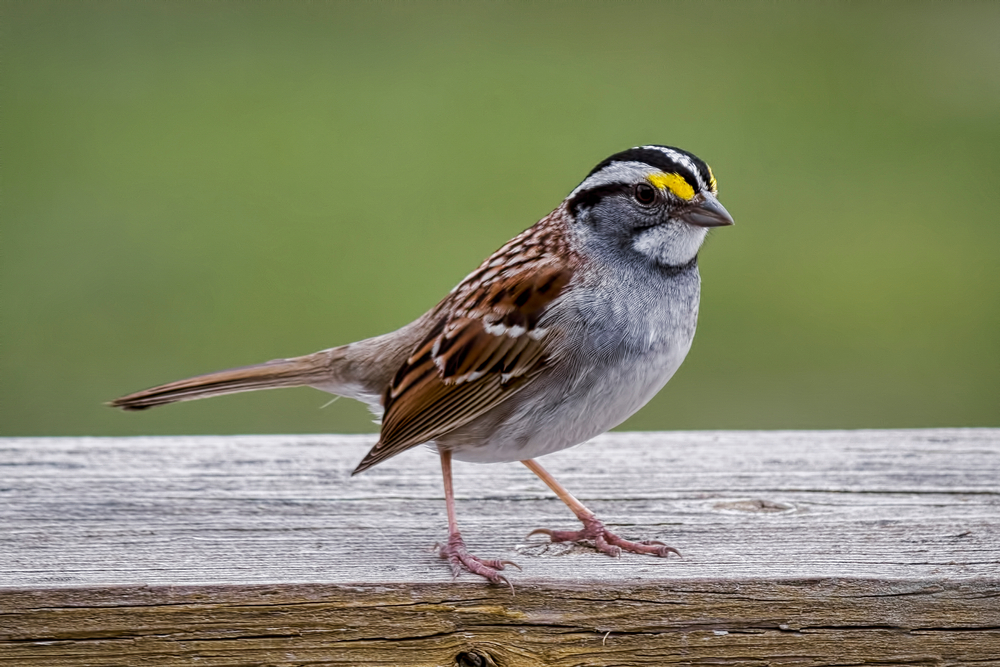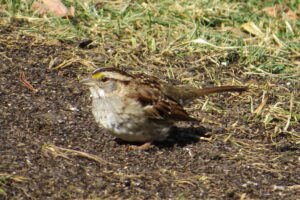White-throated Sparrow, Zonotrichia albicollis
Bill Rowe
Like some previous Birds of the Week, the White-throated Sparrow is a familiar bird to those who maintain feeders, at least if they have a bit of woods or some dense shrubbery nearby. It’s also familiar to anyone who goes tramping through fields and woods in search of birds, October through April, as one of the most abundant and easily identified of its family—namely, the American sparrows, Passerellidae, of which there are 21 species that occur normally in Missouri and several more that have wandered here just a few times. Like so many other birds that breed in the boreal forest of Canada and the northernmost states, the White-throat migrates south for the winter, but no farther than the midwestern and southeastern U.S., with smaller numbers reaching the western states. It comes in two distinct forms throughout its range (see next section). Over the span of many decades, there may have been a slight decline in its population, but overall it still numbers well up in the millions and is designated a species of Least Concern. Its song is one of the easiest to learn, a pure whistled “O…my…Canada-Canada-Canada” (or any other words you like that fit that rhythm).
IDENTIFICATION: Rather large and plump for a sparrow, with a distinctively striped head, a small, well-defined white throat patch, and a yellow highlight between the eye and the bill. It comes in two basic color forms, or morphs: the “white-striped” morph has bold, clean black and white head stripes (see photo above), while the “tan-striped” morph replaces those with a duller dark brown and tan (see photo below, left). Immature birds of either type in their first winter look much like tan-striped adults, so that the more obvious and handsome white-striped adults are usually in the minority. Field guides may depict the species as having a plain unmarked gray breast, but in fact some of them, especially immatures, show streaks of varying strength.
ST. LOUIS STATUS: Fall through spring, the White-throat is common to abundant in our woods, brushy areas, and suburbs; it will discreetly patronize feeders by gleaning seed from the ground and retreating into the bushes at the first disturbance. An occasional White-throat has been found hanging out here in the summer, missing out on its chance to find a mate up north and raise a family that year.
Learn more and listen to the songs and calls of White-throated Sparrows here.
Tan-striped morph
Photo Credit: Bill Rowe
Heavily streaked bird, perhaps
first-winter immature
Photo Credit: Al Smith






